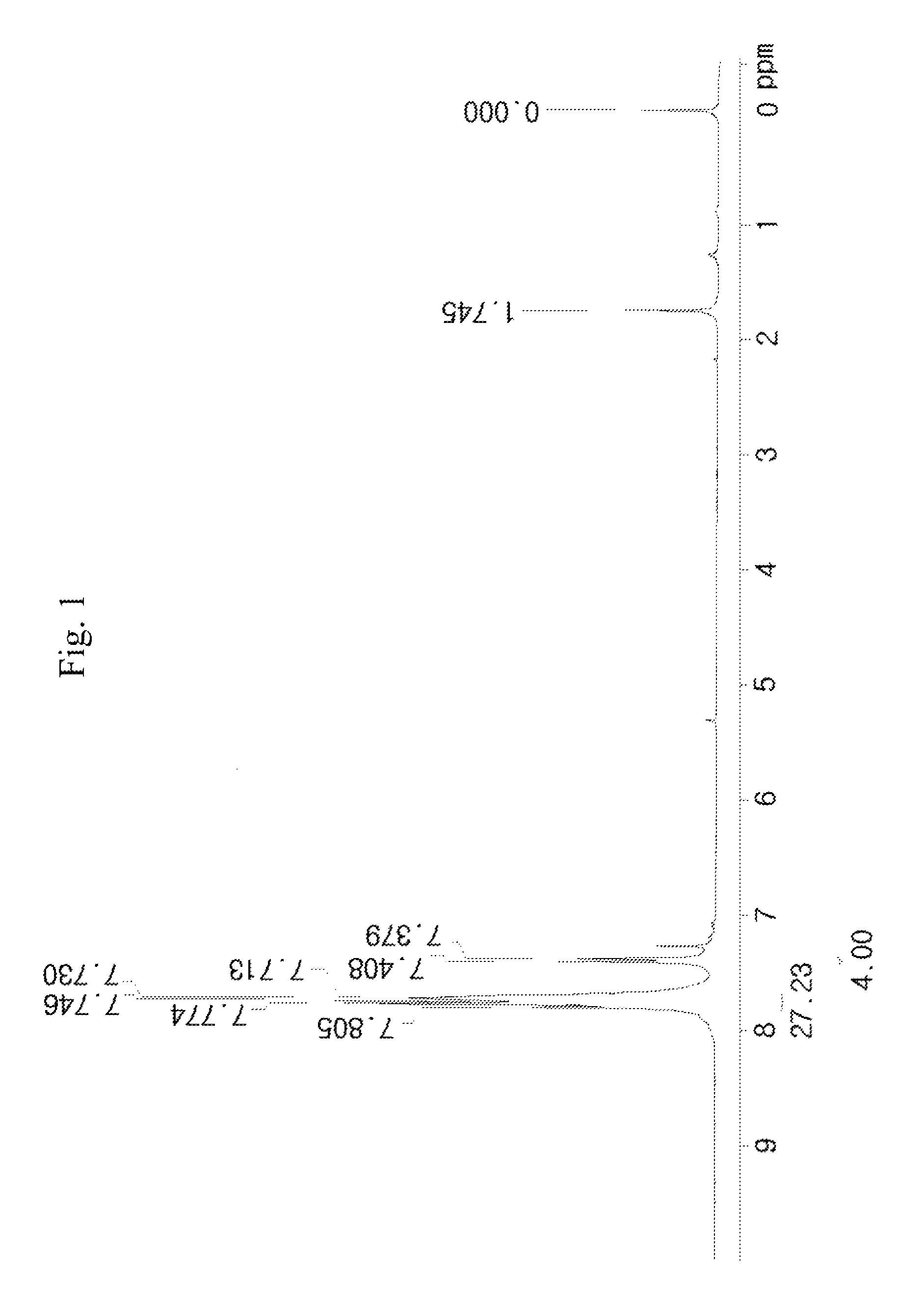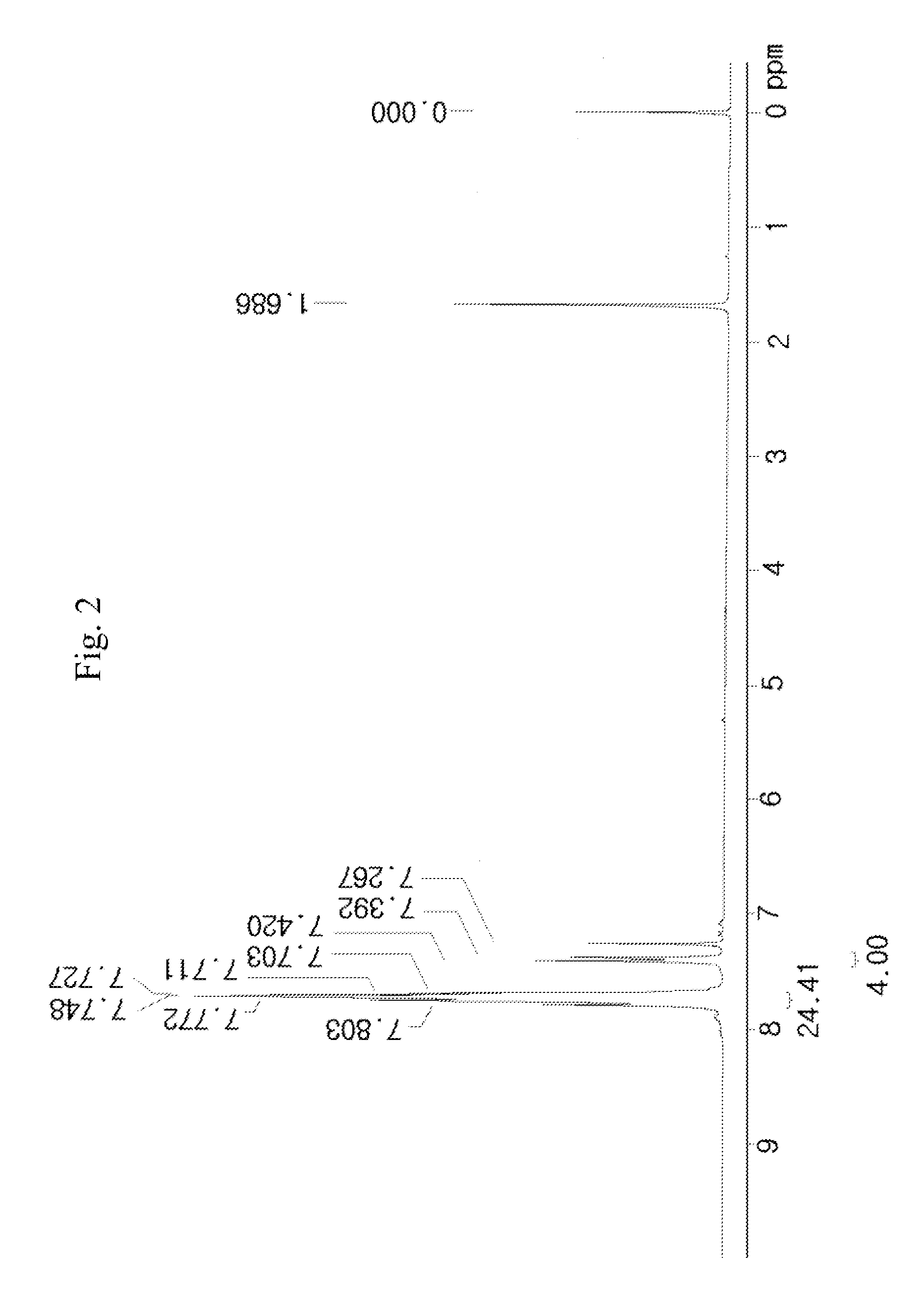Sulfonium compound, photoacid generator, and resist composition
a technology of photoacid generator and compound, which is applied in the direction of photosensitive materials, instruments, photomechanical equipment, etc., can solve the problems of inability to obtain resist patterns having uniform characteristics, inconvenient use of photoacid generator mixture, and inability to uniformly mix photoacid generators, etc., to achieve excellent miscibility within resists and improve miscibility with resists
- Summary
- Abstract
- Description
- Claims
- Application Information
AI Technical Summary
Benefits of technology
Problems solved by technology
Method used
Image
Examples
synthesis example 1
[0109]1) 100 g of phenyl acetate represented [A] in the following reaction scheme (1-1) and 133.1 g of phenyl sulfoxide represented by [B] in the following reaction scheme (1-1) were mixed in 1200 ml of dichloromethane (MC) under stirring, and thus a mixed solution was prepared. The reaction temperature of the mixed solution was lowered to −78° C. using dry ice and acetone.
[0110]204 g of trifluoromethanesulfonic anhydride (CF3SO2)2O) was placed in a dropping funnel at −78° C. and was slowly added dropwise to the mixed solution prepared above.
[0111]The dropwise addition was carried out for 3 hours at the reaction temperature, and the resulting mixture was stirred. Subsequently, when the starting materials disappeared on thin layer chromatography (TLC), the reaction was completed. Thus, a reaction solution was prepared.
[0112]To a solution prepared by dissolving 200 g of calcium carbonate in 1.5 L of water and cooled to 0° C., the reaction solution was added, and the mixture was vigoro...
synthesis example 2
[0132]50 g of a compound represented by [A] in the following reaction scheme 2 and 23 g of sodium nonafluorobutanesulfonate were dissolved in 200 ml of dichloromethane (MC) and 200 ml of distilled water (DW) to prepare a mixed solution, and the mixed solution was vigorously stirred for 5 hours at room temperature (about 25° C.). Thus, a reaction solution was prepared.
[0133]The completion point of the reaction of the reaction solution was confirmed by 19F-NMR, and after completion of the reaction, the reaction solution was washed with an aqueous solution of K2CO3 and distilled water. The organic layer was concentrated, and thus a reaction liquid was prepared. The crude reaction liquid was purified using dichloromethane and hexane, and from the purified reaction liquid, 62 g (yield 95%) of a compound represented by [C] in the following reaction scheme (2) was obtained.
[0134]FIG. 2 presents the NMR data of the compound [C] produced by the reaction scheme (2).
[0135]
synthesis example 3
[0136]50 g of a compound represented by [A] in the following reaction scheme (3) and 24.5 g of adamantane-1-carboxylic acid 2,2-difluoro-2-methanesulfonylethyl ester sodium salt represented by [B] in the following reaction scheme (3) were dissolved in 200 ml of dichloromethane (MC) and 200 ml of distilled water (DW) to prepare a mixed solution. The mixed solution was vigorously stirred for 5 hours at room temperature (about 25° C.), and thus a reaction solution was prepared.
[0137]The completion point of the reaction of the reaction solution was confirmed by 19F-NMR, and after completion of the reaction, the reaction solution was washed with an aqueous solution of K2CO3 and distilled water. The organic layer was concentrated, and thus a reaction liquid was prepared. The crude reaction liquid was purified using dichloromethane and hexane, and from the purified reaction liquid, 55.4 g (yield 92%) of a compound represented by [C] in the following reaction scheme (3) was obtained.
[0138]F...
PUM
| Property | Measurement | Unit |
|---|---|---|
| temperature | aaaaa | aaaaa |
| temperature | aaaaa | aaaaa |
| molar ratio | aaaaa | aaaaa |
Abstract
Description
Claims
Application Information
 Login to View More
Login to View More - R&D
- Intellectual Property
- Life Sciences
- Materials
- Tech Scout
- Unparalleled Data Quality
- Higher Quality Content
- 60% Fewer Hallucinations
Browse by: Latest US Patents, China's latest patents, Technical Efficacy Thesaurus, Application Domain, Technology Topic, Popular Technical Reports.
© 2025 PatSnap. All rights reserved.Legal|Privacy policy|Modern Slavery Act Transparency Statement|Sitemap|About US| Contact US: help@patsnap.com



